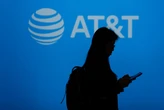The current college football season enters its third weekend with something that would have been unthinkable just a few years ago: universities cutting actual paychecks to star players. Thanks to the $2.8 billion House v. NCAA settlement approved in June, schools can now share up to $20.5 million of their revenue directly with players across all college sports this year. That figure will climb by at least 4% annually over the decade-long agreement.
It’s a far cry from the “they’re not employees” rhetoric we’ve heard from universities in recent decades and represents a fundamental reordering not just of college football but of college athletics in general. Until 2021, college athletes couldn’t profit from their talents at all—no endorsements, no appearance fees, nothing. Then name, image, and likeness (NIL) deals provided the first crack in the dam, allowing players to finally monetize their name, image, and likeness through third-party deals.
Welcome to the age of post-amateurism
Now, direct payments from schools represent an even bigger shift. Under the new revenue-sharing model, roughly 75% of revenue will go to college football players, 15% to men’s basketball, 5% to women’s basketball, and 5% to all other sports. The booster collectives that dominated NIL since 2021 are being absorbed into athletic departments or fighting for their lives as NIL returns to actual endorsements rather than disguised pay-for-play. And now, as private equity money begins flowing into college sports through media rights deals and conference partnerships, the dam has officially collapsed.
The rapid evolution has created a landscape where every move is scrutinized for potential conflicts of interest and precedent-setting implications. Even established players like OneTeam Partners—which represents over 20,000 professional and college athletes through a joint venture between the NFL and MLB players’ unions—have found themselves under scrutiny as regulators and stakeholders attempt to navigate the blurred lines between advocacy, representation, and business interests.
But Sean Sansiveri, CEO of OneTeam Partners, views this regulatory complexity as expensive theater—necessary steps toward professionalization, but ultimately a detour from the real solution. OneTeam is not the target of the ongoing investigation and has fully cooperated from the beginning, the company says.
During his previous 13-year tenure with the NFL Players Association (NFLPA), Sansiveri helped develop concussion protocols and grew the union’s licensing program from $90 million to nearly $400 million.
Sansiveri spoke with Fast Company to discuss why unions are key to sustainable athlete compensation, how private equity could accelerate this process, and how the next three to five years have the potential to transform college sports as we know them.
House v. NCAA
The House v. NCAA settlement allows schools to pay players directly for the first time, but NIL deals have been the main source of athlete compensation since 2021. How do you see the relationship between these two compensation streams?
NIL was never meant to replace fair compensation from the system itself—it was just a first step. The House settlement creates, for the first time, a direct compensation stream from schools to athletes. But it doesn’t replace NIL—it sits alongside it. Increased revenue sharing is going to be the biggest determination of what the future looks like. Some schools and conferences are already exploring alternative direct payment models, and we expect that to accelerate.
I think the issue that’s going to continue to change everything is primarily employment status. Will college athletes be recognized as employees? They should be, but that’s going to carry the most significant implications for compensation, benefits, rights to organize, etc.
So in this new world where schools can pay up to $20.5 million directly to athletes, what role do third-party NIL deals actually play?
In the pros, you have revenue sharing from the league and the teams. Roughly 50% of the revenue generated in the NFL, for example, funds the salaries and benefits of players. But we also have a group licensing program and individual athlete endorsement deals. A comparable model is likely in the best interests of collegiate athletes—each existing in parallel. But if the schools assume the duty to represent athlete NIL directly—as opposed to a collective bargaining unit—and fail to maximize the value of those rights, I anticipate there being a lot of legal pain for those schools down the line.
Booster Collectives get the boot?
Booster collectives have been the dominant force in NIL since 2021. With schools now able to pay players directly, what’s happening to these collective organizations?
I think it depends on whether they’re going to professionalize themselves and find an athlete empowerment role. If they don’t, they’re probably not going to play much of a role at all.
It’s no longer about donations. It’s about investing in systems that generate long-term value. Private equity money typically goes into media rights, licensing, and infrastructure. To me—and I think to every athlete who’s focused on this—that means players should benefit through structured revenue sharing, formal employment models, and eventually maybe even equity in the teams themselves. So it’s less of this one-off cash model and more of a long-term compensation model, very much similar to what the pros have.
Private Equity is in the house
Speaking of long-term value, private equity has started investing in college sports in ways that weren’t previously allowed. What’s the significance of that shift?
Private equity (PE) seems to be quietly becoming one of the most consequential forces in shaping the future of college sports. Unlike the NIL headlines, the story there is about who owns the ecosystem, not who’s getting paid within it. PE firms are eyeing long-term media deals as high upside investments. Infrastructure and commercialization—think stadium upgrades, campus entertainment districts, immersive fan experiences—are areas that private equity has a lot of experience in. If you can turn college athletics into a year-round multi-channel revenue engine, of course they’re interested.
The problem, though, is that athletes aren’t formal stakeholders. Private equity is coming in to extract long-term value from the athletes who deserve and don’t currently have a seat at the table. How are they going to share in the upside? In my mind, that’s the biggest question.
That raises an interesting question about power dynamics. Could private equity actually help athletes gain more leverage through unionization?
You could actually see an acceleration towards employment status and collective bargaining if private equity decides to really jump fully into this space. If you’re going to roll up schools, roll up conferences, you’re going to want an antitrust exemption, and you’re either going to get that from Congress or through a non-statutory labor exemption by having a union.
In the professional models, if a union had decertified for purposes of antitrust in a lockout or strike, the first thing the professional leagues insist is that the union be reconstituted because of the antitrust exemption. So we could see private equity make a similar push in college sports.
The licensing gold rush
Your company, OneTeam Partners, focuses heavily on group licensing. How does that model work in college sports, and why is it important in this changing landscape?
Group licensing can be a powerful equalizer. It allows athletes across entire teams, even in non-revenue-generating sports, to benefit collectively. What started as a mechanism primarily used by the professional sports unions is now unlocking revenue for college athletes through video games, jersey sales, and brand campaigns. It’s not just the stars who are participating—it’s the walk-ons, it’s the backups. They’re all earning alongside the All-Americans.
At OneTeam, we have over 20,000 college athletes in our group licensing program today, and in just the first seven months of 2025, we’ve already delivered nearly $20 million in NIL payments to those athletes. But without a union in the space that actually represents those rights in an exclusive capacity, athletes aren’t achieving their full value.
Looking ahead three to five years, what do you think the compensation landscape will look like for college athletes?
Compensation packages would probably look more like their pro counterparts—anchored in direct payments from the schools, revenue sharing hopefully through union-negotiated agreements, and robust exclusive group licensing income from media, merchandise, gaming, trading cards, and jerseys.
With organized labor at the table, that’ll make for a more transparent, structured, and sustainable system that addresses all of these issues. Whether it’s boosters, agent regulation, health and safety concerns, commercialization of data, AI—all of that could be addressed through collective bargaining.
What do you see as the biggest risk if college sports doesn’t move toward that professional model?
The biggest risk is a fractured system with no central voice for athletes. As schools, private equity, and new pay models come into college, I don’t think the danger is chaos anymore. It’s overreach. When employees don’t have a strong voice representing them and without player unions or collective governance, the money is still going to flow. But the athlete rights—the protections, the long-term sustainability—would fall through the cracks.
The pro model: collective bargaining
For someone trying to understand where all this is headed, how would you explain what college sports could, and maybe should, ultimately look like?
The simplest way to explain it is to look at how it’s done in the pros. You have sustainable revenue models that fairly compensate athletes, focus on important issues like player safety, life after sport—everything ranging from prescription drug registry programs to protections for counterfeit merchandise. All of that is handled through a collective bargaining scheme that best serves the athletes.
By serving the talent that drives the value of these sports, you are ensuring a sustainable model. Follow the blueprint that has been forged by the professional sports unions over the past several decades, and do that in college. That’s the simplest path to organization and eliminating the chaos and the potential for overreach.
What advice would you give to college athletes as they navigate this rapidly changing landscape?
When I’m looking at these NIL opportunities, especially in the context of group licensing, until there’s employee recognition and a professional-style union in place, so many of these entities that are participating in the value growth are doing so for their investors. The unique factor in professional sports is that if money from NIL is going to a union, that money is strengthening a union and advocating for fair wages, hours, and working conditions on behalf of the athletes.
In the current ecosystem, we don’t have that. So who is participating in the value chain and what are their ultimate incentives? If I’m an athlete, those are the questions I’d be asking.










No comments